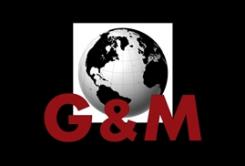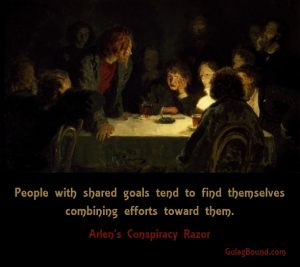by Mark Musser, author of the book Nazi Oaks, who will be our guest at Gulag Night, 10pm-Midnight, ET, tonight
Adolf Hitler once proclaimed, “we will not only create a Germany of power, but also a Germany of beauty.” Much earlier, and spoken at a time when Germany had been financially suffering for many years from what they deemed to be the international crisis of capitalism foisted upon them by the Treaty of Versailles, Hitler once simplified the purpose of the National Socialist movement, “I have the ambition to make the German people rich and Germany beautiful.” While scholar after scholar has spilled a lot of ink describing Nazi Germany’s political power and the Third Reich’s economy, relatively few have paid much attention to the second aspect of Hitler’s overall plans for Germany – to make it beautiful. This certainly would have included Hitler’s grandiose romantic plans to help turn cities like Berlin into a Greco-Roman Germania, but it also included sweeping environmental legislation at the federal level that made Nazi Germany the greenest regime on the planet by 1935.
 By 1935, Nazi Germany had passed three landmark green laws at the federal level that were the most environmentally progressive of the era. They were all signed by the Fuhrer and considered to be his personal pet projects. The first was an animal rights protection law passed in 1933, followed by a very friendly environmental hunting law called the Reich Game Law in 1934. The capstone of Nazi ecology, however, was the Reich Nature Protection Law passed in 1935 called the RNG. This particular law was well ahead of its time as it promoted green social engineering schemes over private property along holistic, totalitarian lines. The Nazi slogan for the RNG was all encompassing, “it shall be the whole landscape!” Here is seen the birth of environmental effects reports and permits. Though seldom used, private property could also be expropriated without compensation for environmental reasons. That this was born in Nazi Germany is not an insignificant fact.
By 1935, Nazi Germany had passed three landmark green laws at the federal level that were the most environmentally progressive of the era. They were all signed by the Fuhrer and considered to be his personal pet projects. The first was an animal rights protection law passed in 1933, followed by a very friendly environmental hunting law called the Reich Game Law in 1934. The capstone of Nazi ecology, however, was the Reich Nature Protection Law passed in 1935 called the RNG. This particular law was well ahead of its time as it promoted green social engineering schemes over private property along holistic, totalitarian lines. The Nazi slogan for the RNG was all encompassing, “it shall be the whole landscape!” Here is seen the birth of environmental effects reports and permits. Though seldom used, private property could also be expropriated without compensation for environmental reasons. That this was born in Nazi Germany is not an insignificant fact.
In addition to these environmental laws, the Nazis also started forestry practices called Dauerwald, which means ‘eternal forest.’ Some German greens had been pushing for Dauerwald to be put into practice at the federal level for years, but it was the Nazis who finally granted them their great wish. This ecological pipe dream that a forester is required to refrain from cutting conifer stands under 50 years of age, refrain from clear-cutting more than 2.5% of the forest, use single tree selection cutting principles rather than clear-cuts, cut the worst rather than the best trees, and refrain from cutting the oldest and the biggest trees – all at the same time – perhaps could have only worked in the depressed era that characterized Germany 1930-1935. Nazi foresters were also very concerned about eradicating diseased trees, not to mention invasive species, both of which they deemed detrimental to the German landscape. Thus the forest ecosystem must be kept consistent with its local Aryan healthy environment, “ask the trees, they will teach you how to become National Socialists!” Thus, the green anti-invasive cult, so prevalent these days, was emphasized with a vengeance in Nazi Germany.
The Nazis also incorporated a modernized agrarian romanticism into their movement as well. Heinrich Himmler and the SS dreaded over what they called “land flight.” Himmler, along with his agricultural mentor, Richard Walther Darre, actually believed that German racial biology was being destroyed by the cosmopolitan life of the cities. Germans were being uprooted from their homeland and enslaved to the artificial values of the Jewish international market on the one hand, and Jewish bolshevism on the other. Himmler opined that “the yeoman on his own acre is the backbone of the German people’s strength and character.” To counteract this existential crisis, Darre and Himmler came up with a cockamamie racial green doctrine called ‘blood and soil.’ The idea was to get German blood back out of the city into the soil of the countryside where they could become self-sufficient farmers in a ‘buy local’ scheme of racist proportions.
The great concern here was that many believed that Germany itself was running out of what they called ‘living space’ or Lebensraum. That Nazi Germany would soon be heading East in a massive blitzkrieg to claim areas where Aryan Germans lived, or had lived in the distant past, is thus perhaps not so curious. Although Himmler did have a secret plan to turn Poland and Russia into an independent industrial empire, he was nonetheless also heavily involved in a horrific green master plan for the occupied East as well. In fact, one of the reasons Himmler wanted to seize heavy industry in the East was to use it as a fund raiser to help pay for this plan. Himmler and Hitler had grandiose plans to turn the occupied East into a beautiful Aryan park of sorts where Germans and Nature could live more harmoniously together apart from the corruptions of the Jewish-American capitalistic complex. Indeed, on the night of January 28-29, 1942, Hitler commented, “I would regard it as a crime to have sacrificed the lives of German soldiers simply for the conquest of natural riches to be exploited in capitalist style. According to the laws of nature, the soil belongs to him who conquers it.”
Here is precisely where Hitler’s plans to make Germany rich, powerful and beautiful – all at the same time – not only came to a near apocalyptic head which exploded all of Europe into a fiery cauldron of death and destruction, but also compromised the green Nazi programs from the inside out. In order to resolve the Malthusian math problem that prophesied too many Germans with too few natural resources because of too narrow a living space – the Nazis needed a powerful army to expand their frontiers. However, in order to have a powerful army, the Nazis needed money, power and influence. In order to have this, the Nazis needed to compromise to some extent with the Wehrmacht, the German industrialists, and even with the German populace as well. This meant that even the environmental laws and practices of 1933-35 would also be compromised too. The ensuing war effort, called the great battle for production (The Four Year Plan), trumped almost every other concern. The National Socialist government jobs program also occasionally ran roughshod over the environmental laws. Nevertheless, the Four Year Plan was later to be regulated by an environmental planning book that was signed by all of the leading Nazis in 1938, and the ‘green’ farmers of Germany were to play a vital role in this whole endeavor.
These compromises were also further compounded by the Nazi self-sufficient drive toward national economic autarky. This invariably meant greater industrial activity inside of Germany’s borders, not to mention the greater need for more mining as well. This, in turn, also led to more than a few heated environmental discussions among the Nazi hierarchy. That there was a strong drive to make synthetic substitutes to make up for Germany’s dearth of natural resources is thus not so surprising. This would all but guarantee that the chemical giant IG Farben would become the heart of the Nazi economy. The Nazi economy became a growing ersatz economy as the 1930’s rolled along, and surprisingly enough, their subjugation of most of Europe did little to relieve them of their deficiencies. As they swallowed the various economies around them in their drive to obtain continental hegemony, they also inherited all of their problems as well. Ecologically, however, Germany itself began to experience some relief as raw materials could now be obtained elsewhere – which was largely the whole point of what lebensraum was all about.
The Nazis seized the German economy primarily by taking control of its imports. These imports were first given to the industrialists committed to the armaments buildup. While this greatly enriched the big industrialists and gave the appearance of a strong rebounding economy throughout the 1930’s, it also squeezed out the bourgeois middle class and subjected the average German consumer into increasing rationing, especially as the war kicked into high gear. The fact of the matter is that both Hitler and Goering were also sacrificing the entire German economy on the Greco-Roman altar of war. Sound financial decisions were seldom made during the Third Reich, something which Hjalmar Schacht, the chief financial architect of the regime, repeatedly warned against. In short, thanks to the war effort, both environmentalism and capitalism were left in the lurch.
National economic autarky also meant converting more German natural areas into farming tracts as much pressure was placed on German farms in order to feed all of the people. Here, Darre and Himmler’s anti-capitalist plans of building a greater Germany on the backs of the hearty peasant farmers closely tied to the land was compromised as well. Growing enough food to feed everyone quickly became more important than over how it was done. Thus, ironically enough, capitalistic farming rebounded in the later 1930’s. In 1942, Darre was dismissed as Nazi Germany’s Agricultural Minister because of his failure to provide enough food for Germans. This problem was partially relieved by stoking up the gas chambers on the Eastern Front.
Rather than suggest that Hitler and the Nazis did not care about their green programs – as many environmental historians have been all too quick to suggest – it is simpler to argue that Hitler was willing to temporarily contravene their own green laws in order to build a military machine capable of conquering all of Europe. After the war, the greater Reich would then return to its roots. Indeed, such green compromises did not go unnoticed by the Fuhrer. On July 5, 1942, Hitler said, “after the war, equally, we must not let control of the economy of the country slip from our hands. If we do, then once more all the various private interests will concentrate on their own particular objectives. The coastal population, for example, from the viewpoint of life as they see it, still regard land reclamation by means of dam construction as the last word in wisdom; in point of fact, however, land reclamation by this method is the purest folly, for we have all the land we need in the East. On the other hand, enrichment of the soil is still most important, and it must not be impeded by the interests of industry. When once we are convinced that slime from the seabed is, on account of higher nitrogen content, a better fertilizer than any artificial manure, we must transport whole trainloads of it, in spite of the protests of our chemical industry. As most people are egoists at heart, any efficient functioning of a national economy is not possible without State direction and control.” Nothing could be further from the truth than to suggest that the Nazis did not care about their green plans. In fact, in some ways, they were perhaps far more serious about them precisely because they were willing to go to war over them.
Most fundamental of all is that even Nazi racism was rooted in the romanticism, nihilism, and naturalism of Johann Wolfgang von Goethe (1749-1832), Arthur Schopenhauer (1788-1860), Richard Wagner (1813-1883), Friedrich Nietzsche (1844-1900), and Ernst Haeckel (1834-1919). All of these men had a strong respect for nature, but also had varying degrees of anti-Semitic sentiments as well. Goethe was the veritable father of German romanticism together with the idea of the German volk (Germanic folk people), which slowly simmered the fires of racism throughoutthe 19th century until the Nazis Aryanized it in the 20th century. Schopenhauer was the great German scholar who finished off Immanuel Kant’s great legacy of plunging man entirely into nature as he left behind the last vestiges of his master’s moral argument for God’s existence. This also makes Schopenhauer one of the primary fathers of environmental ethics. That he was one of the original animal rights gurus of the modern era is no coincidence. More troubling is that Schopenhauer was also Hitler’s favorite philosopher, followed closely by Nietzsche. Wagner’s wild romanticism provided the musical background for the Nazis. Hitler borrowed from Nietzsche’s nihilistic will to power doctrine and converted it into a gigantic ‘triumph of the will’ that was to strengthen Germany by leaving behind the weaknesses of its previous Judeo-Christian heritage contrary to Nature’s stern laws. Thus, not surprisingly, the final natural ingredient of Nazism was Ernst Haeckel’s Social Darwinism where eugenics and ecology were hotwired together into a volatile holistic totalitarianism that placed the Aryans on top of the indigenous evolutionary totem pole – all allegedly undergirded by the biological sciences of the day. That Haeckel coined the very term ‘ecology’ in 1866 only further deepens the naturalistic ethics of the Nazis.
This rich concoction of explosive racism, naturalistic progress, nihilism, and romanticism had devastating consequences in World War II. 100 years of revolutionary German naturalism, romanticism, and nihilism was converted into eco-imperialism by Nazi ‘scientific’ racism on the Russian Front. In fact, the ‘dialectical’ relationship between racism, nihilism, romanticism, naturalism and environmentalism under the Nazi regime would even help give birth to the modern cult of sustainable development. The ‘green’ national geographic geopolitics of Karl Haushofer’s lebensraum doctrine was changed into a justification to invade Poland, Belorussia and the Ukraine where inferior Jews and Slavs, who did not know how to relate properly to Nature and her Social Darwinian laws, would be exterminated and enslaved. Superior Aryans would then resettle the conquered areas and be allowed to culturally develop the land into a grand Aryan frontier of sustainable development where German men and nature could live more harmoniously together. Such a hegemony under Nazi state control would also serve as an effective counterweight against the industrial might of North America, not to mention the growing industrialization of the USSR, which Hitler considered to be an outright declaration of war.
Nazism was a political biology based on eugenic science, dressed up in progressive naturalistic ethics, nihilistic power with ecological predilections. While such a contrasting tension between race and environmentalism, science and romanticism, power and beauty, Superman and Nature might all seem contradictory to many today, it was Dr. Robert Pois who strongly pointed out that, “However weak and inconsistent the natural religion grounded Weltanschauung appears when it is subject to reason informed scrutiny, the Nazis were convinced that they had succeeded in fusing the realms of nature and spirit, that the product of this fusion was or would be natural, Aryan man, and that the process of reinforming a decadent, bourgeois world with a new nature Mythus necessitated extermination of those whose very existence was an insult to the natural laws of life. It was no accident that the most successful purveyors of political mysticism to date provided that the last sight which greeted those who were to be exterminated, before they confronted the expression which crowned the gate of Auschwitz, ‘Arbeit Macht Frei’, was that of a large tree, striking in its luxuriance.”


Mark Musser is the author of “Nazi Oaks: The Green Sacrificial Offering of the Judeo-Christian Worldview in the Holocaust” and a commentary on the warning passages in the book of Hebrews called “Wrath or Rest: Saints in the Hands of an Angry God.”










This excellent website truly has all the information I needed concerning this subject and didn’t know who to ask.